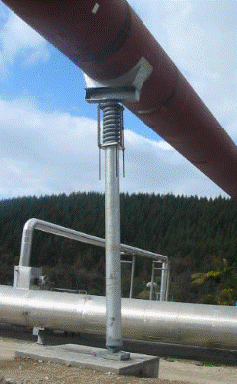I'm a structural engineer but need some advice. Ive done lots of pipe supports and racks with piping engineers before but in this case we dont have a pipe stress engineer involved. Yet.
We have a 36inch diameter pipe that's 20ft off the ground and about 90ft long before it elbows down into the ground. It has 6 pumps below it that feed it with wastewater effluent. The contractor says the pipe supports dont need any bracing because theres no lateral load in piping.
In my opinion it needs a piping engineer to determine if theres guide or anchor loads. At my past job if we didnt have a pipe stress analysis we assumed 30% pipe weight for friction load at guides and 35N/mm pipe dia for anchors plus seismic.
In your opinion is there obviously lateral load or does it need a piping engineer? What does B31 say about when you need a piping engineer to check it? Is there a minimum requirement? Thanks.
We have a 36inch diameter pipe that's 20ft off the ground and about 90ft long before it elbows down into the ground. It has 6 pumps below it that feed it with wastewater effluent. The contractor says the pipe supports dont need any bracing because theres no lateral load in piping.
In my opinion it needs a piping engineer to determine if theres guide or anchor loads. At my past job if we didnt have a pipe stress analysis we assumed 30% pipe weight for friction load at guides and 35N/mm pipe dia for anchors plus seismic.
In your opinion is there obviously lateral load or does it need a piping engineer? What does B31 say about when you need a piping engineer to check it? Is there a minimum requirement? Thanks.


